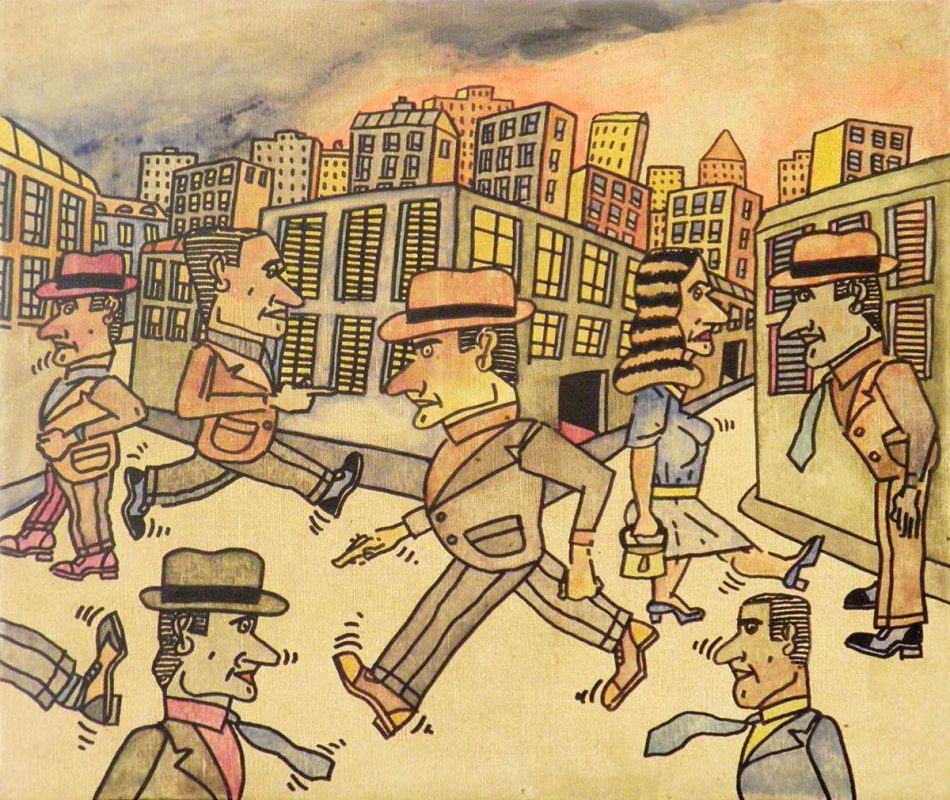Fernando Botero & Antonio Seguí, Opera Gallery
Opera Gallery New York places in dialogue two great figures of 20th and 21st centuries Latin American art. Share
Having studied and drawn their inspiration away from their home countries, both artists have left their lasting mark on the international contemporary art scene. Botero and Seguí have created very distinctive universes, full of bright colors and cartoonesque characters. An inflated or excessive world through which the artists take a fresh and sharp look at the idiosyncrasies and nonsenses of modern life.
Fernando Botero
One has to keep in mind Botero’s Latin American origins to better understand his work. Botero was born in 1932 in Medellín, Colombia. In those days, it was a small isolated town renowned for its remarkable Baroque architecture; a legacy of the Spanish colonial regime. He was 4 years old when his father passed away.
Although he proved to be a talent in drawing at an early age, the future perspectives of having an artistic career were slim so his uncle sent the young Fernando to a Matador school. He would stay there for only 2 years before going back to his passion for drawing and painting. This experience would have a great influence on him though, and he would later on paint remarkable scenes of bullfighting. In 1948, when he was only 16, his drawings were published in the magazine El Colombiano and he also wrote a few articles on contemporary European art.
In 1951, he settled in Bogotá and participated in several collective exhibitions. He won a prize at the Salon of the Colombian Artists and used the money he received to travel to Europe. In 1952, he headed for Spain where he attended the Fine Art Academy in Madrid. He became acquainted with the works of Diego Velázquez and by other great masters of Spanish Baroque art.
He also visited Florence where he discovered the masterpieces of the Italian Renaissance. On his return to Latin America, Botero studied the works of Mexican artists such as David Alfaro Siqueiros and Diego Rivera. In 1957, he painted Still Life with Mandolin. As he was painting it, he noticed that by reducing the size of the sound hole on the mandolin, the proportions were altered and the volume of the instrument became huge: The Botero style was born! In 1960, he moved to New York and in 1961, the Museum of Modern Art of New York bought his artwork Mona Lisa, Age Twelve.
His work was finally recognized by the public and by his peers. In 1973, he left New York for Paris and dedicated himself to sculpture which was the natural progression of his pictural world: a third dimension was added to his characters. The art of Fernando Botero is above all characterized by full, generous, voluptuous and sensual shapes. It gives us a feeling of completeness and immoderation.
However one should also appreciate the refined treatment of the details in his work. His art is at the same time excessive, disproportionate, unusual and Baroque. Botero captures the full range of humankind condition from poverty to wealth, from happiness to misery. He gives body to his characters and makes them enter a new timeless dimension. His art overtakes the shapes and colours of transience and grows into a reminiscent world full of mystery and sensuality. His work is universal and dwells on our time, encompassing the history and the Latin American roots of its author.

Antonio Seguí
Born in Córdoba, Argentina in 1934 into a middle-class family, Antonio Seguí is today known as a one of the most prominent Latin American artists of his generation. Like many of his Latin American forebears and contemporaries, Seguí has spent a large part of his artistic career away from his home country.
Encouraged by fellow local painter Ernesto Farinina to pursue the arts, he travelled through Europe and Africa from 1951 to 1954. He first went to Madrid and studied at Real Academia de Bellas Artes de San Fernando, and subsequently at the École des Beaux-Arts in Paris, where he studied painting and sculpture.
Later, he returned to Argentina and studied law, while working as an editorialist for the local newspaper. In 1957, at the age of 23, Seguí realized his first individual exhibition in Córdoba. He moved to Mexico the following year to study engraving and printmaking, and settled in Buenos Aires towards the end of 1960. His work of this period is abstract and textural, and coincides with an interest in Pre-Columbian art born of regular trips through the continent. His extensive journeys to different countries have greatly encouraged his culturally diverse approach to art, as well as a perceptive capturing of the pulse and aura of contemporary urban culture that is rife in his opus.
Since 1963, Seguí has been living in Paris, where he held his own workshop and taught at the École nationale supérieure des Beaux-arts of Paris. This period also marked his transition from abstraction to figuration, when he began championing his signature graphic cartoon-like style. Seguí ’s painting is rich in tonal contrasts, a constant interplay between elaborate backgrounds and the multicolored personages that traverse a painting’s surface, each in a world of his own.
The most recognizable feature of Seguí’s work is the caricaturesque draughtsmanship, which gives a vibrant cadence to the ow of the nameless multitudes. What is singular in the work is the artist’s capacity to give a cast of thousands the hope of a certain individuality.
The exhibition runs from June 21, 2017 – July 05, 2017 at Opera Gallery New York.
Opera Gallery www.operagallery.com



